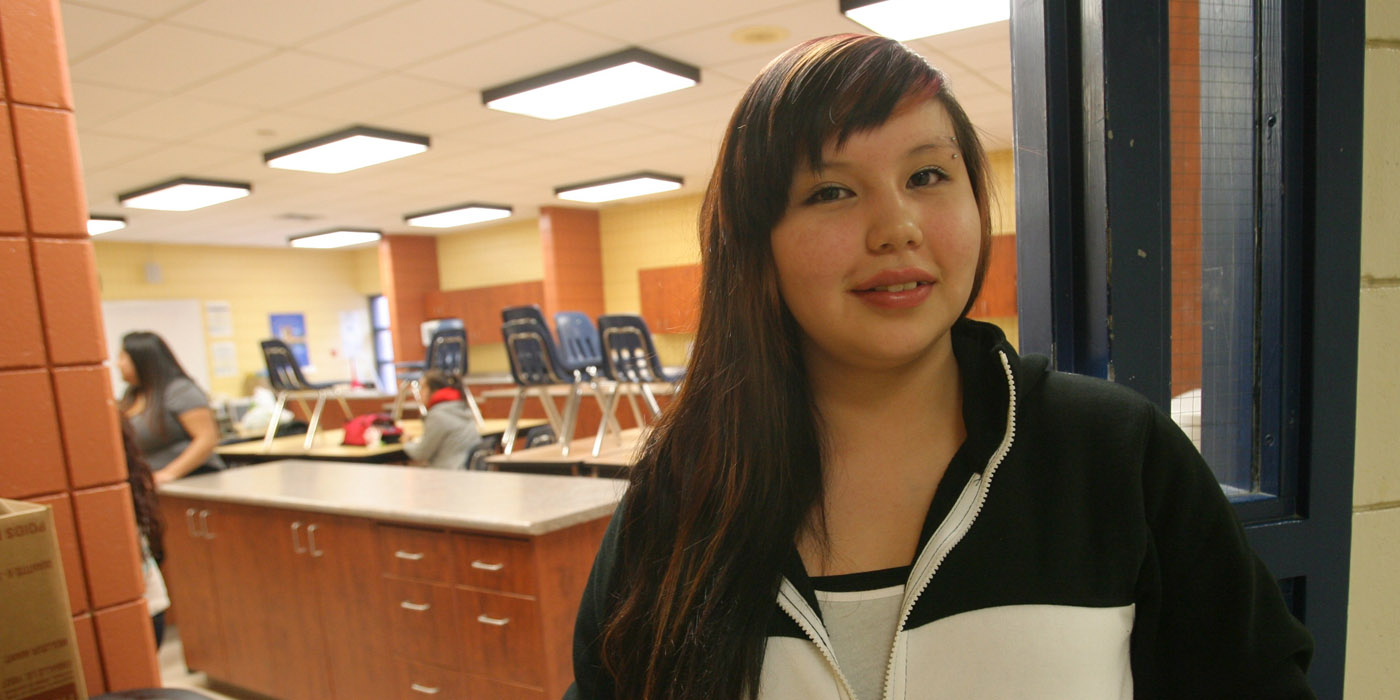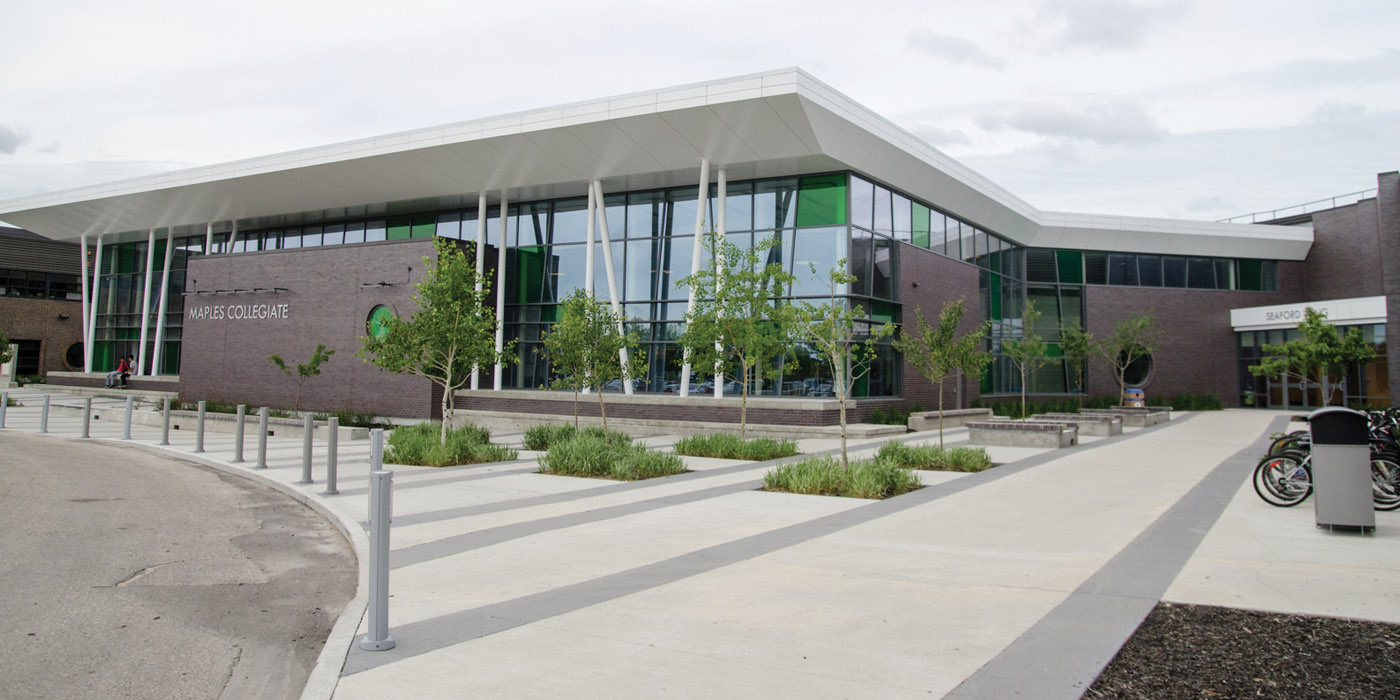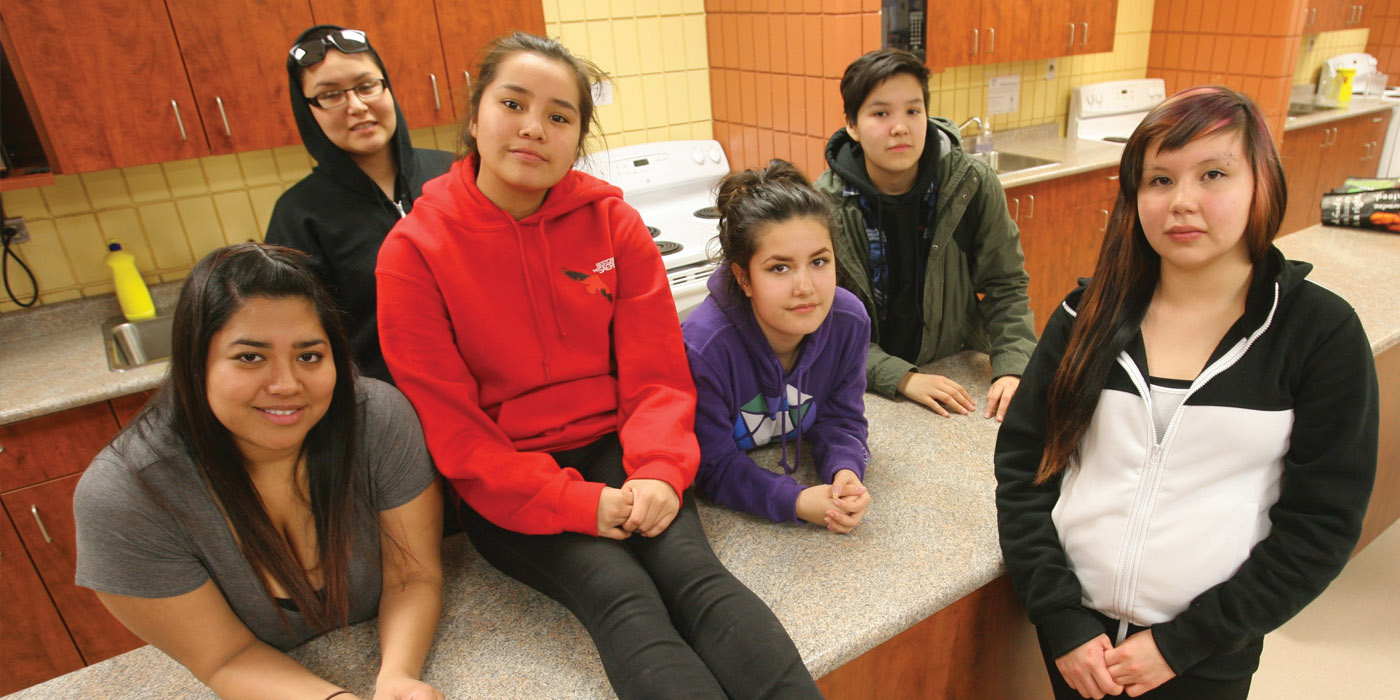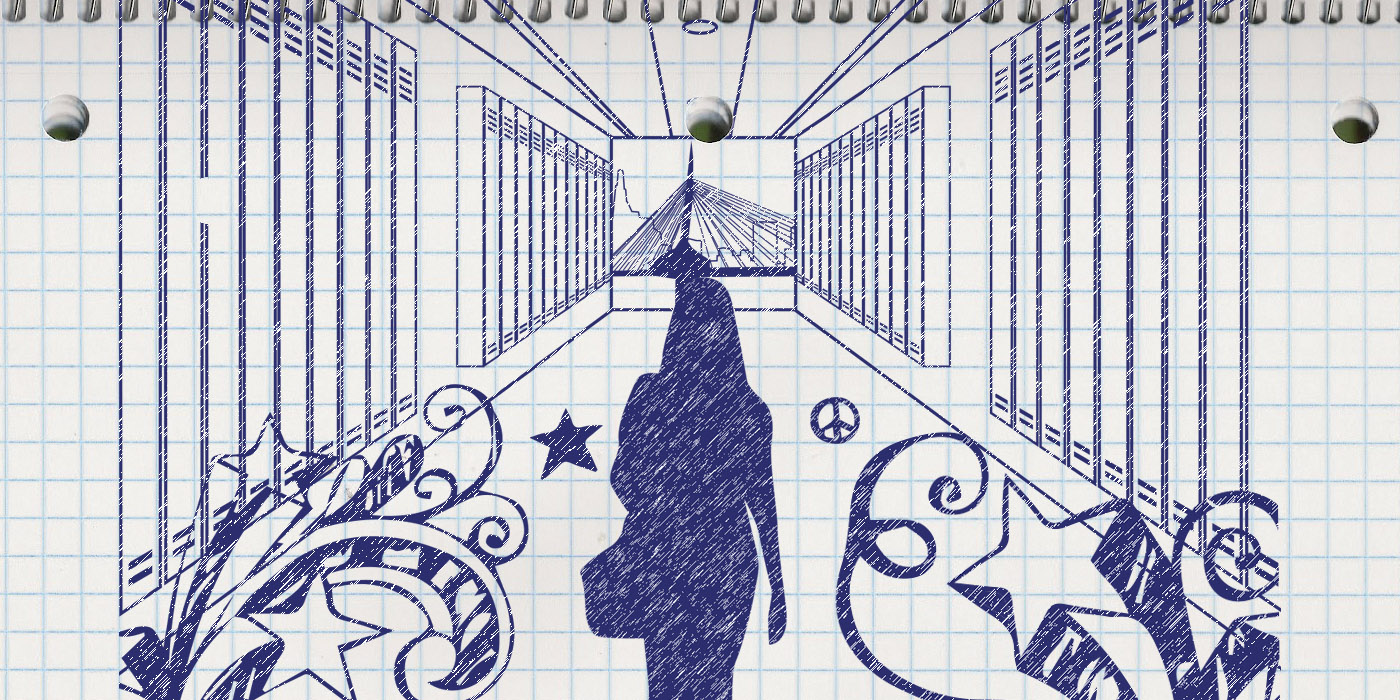By Donna Maxwell
The first day at a new school is always tough but imagine if that new school is hundreds of kilometres away from your family and friends and there are more kids wandering the halls than there are people in your entire home community.
Pressure? That’s an understatement.
Mallory Douglas knows how it feels. The 16-year-old moved from Poplar River First Nation – located on the east side of Lake Winnipeg about 400 km north of Winnipeg – to Manitoba’s capital city last year to start school at Maples Collegiate.
She’d only been to Winnipeg a couple of times previously to shop and suddenly found herself living with relatives she didn’t really know and going to a school where she knew no one.
“My first day of school was terrifying I guess…. Being in a big school full of people I don’t even know.”
“I felt sad and I felt like I shouldn’t have come because I had to leave my family. I was scared, I was nervous to be in the big city by myself,” Douglas said.
“My first day of school was terrifying I guess, ‘cause like, with me being native and coming from an isolated area, it’s like coming here and people always staring, and always looking at me, it was scary. Being in a big school full of people I don’t even know.”
Poplar River has a population of 1,200 so being thrust into the hallways and classrooms of Maples Collegiate, with a population about the same or more, was hard for Douglas.
She was shy and scared and had real concerns about being kidnapped or taken. And her fears were more than just the result of an overactive teenage imagination. Aboriginal women are prey in Winnipeg and other large cities across the country and their plight is headline news.
What’s not in the headlines are programs like Restoring the Sacred.
It’s run by Ka Ni Kanichihk, which means ‘those who lead’ in Cree. It uses mentors to welcome Indigenous youth aged 14-21 to the big city and help them discover their culture, education and employment opportunities in a safe and caring environment.
Dodie Jordaan is an associate executive director who said the five-year-old program is youth centred and aims to develop happy, healthy and motivated youth, but it also takes direct aim at protecting kids from exploitation.


Restoring the Sacred offers them mentors and friendship to help them transition into a world they don’t know.
“It’s an initiative of Tracia’s Trust, which is an initiative of the provincial government, it’s the prevention of sexual exploitation and we know that youth who come from (First Nations) communities are targeted and are very vulnerable.”
“The recruiters, when you’re talking about sexual exploitation or even gang recruitment, they’re really good. And they are close to the same age and they start to hang out with them as friends, and ‘you wanna get your nails done’, and ‘you need a new phone’, and it starts off in this way.
“We know a lot of our youth who have come in the past from the First Nations communities have been targeted, so this program really is providing them safe alternatives.”
Teens who come into Winnipeg from First Nation communities, usually come because their home community doesn’t have high school, stay with host families, who may or may not be known to the teen. Some may be relatives but are distant and are often strangers to the youth.
The teens arrive at a school where they know no one, so Restoring the Sacred offers them mentors and friendship to help them transition into a world they don’t know.
Jordaan said they focus on education because the goal is to keep the kids in school and succeed during their time in the city. The other focus, she said, is on cultural reclamation and empowerment. She said many of the youth don’t have an awareness of their own culture so they offer reclamation activities and understanding of where they come from and where they’re going.
There are about 20-25 mentors who work with the youth and Jordaan said they do everything from teach their young charges to take a city bus to hang out with them at movies and other social outings.
The goal is to keep the kids in school and succeed during their time in the city. The other focus, is on cultural reclamation and empowerment.
Students can take part in Restore the Sacred for one year and sometimes two. Their school year is divided into 10-week sessions where they focus on leadership programs. A recent one taught broadcasting and communications and had the students going to APTN and learning how to use cameras and other equipment and how to do makeup for TV.
Another had the students learning about culinary arts and how to make healthy food choices.
Recruiting and training mentors is paramount to the program’s success.
“The biggest piece is that it’s a mentorship program so we recruit and train volunteer mentors in the community who work one-on-one with the youth. They start to show them how to get on the bus, and they take them to the movies and they start to create a friendship with them,” Jordaan said.
“A lot of the youth are also afraid to come to the city now. They know that Indigenous people, significantly women and girls, are going missing and murdered, and so there’s a fear coming to the city now. Even families are terrified to send their kids. So there is this sense of fear, just to coming here and being Indigenous.
“The mentors work with the youth to provide them with that sense of knowledge of the surroundings and where to go and all the great wonderful things to being in the city and that mentorship relationship is really significant.”
Douglas said Restoring the Sacred has been a tremendous help to her and she’s met other youth in the program whom she feels comfortable with now.

“It helped me understand that there’s people here for you, to help you, to get to know the city, take you around and help you overcome your fear of living in Winnipeg,” she said.
Jordaan said every student gets something different from the program. She said there was a young boy who joined and he was so painfully shy he would wear a hooded sweater everyday and have the hood up over his head. And he never spoke.
An exchange through YMCA Winnipeg and Toronto introduced him to new people who were able to bring him out of his shell. She said the transformation was impressive.
“During that time his hood came off and the other youth were sort of doting on him and wanting to make him laugh and he really opened up in a short amount of time that he’s been in this program. I’d say in the last year he communicates more, he talks, I never see him with that black hood anymore, and I mean he wore it every single time he came into this program and wore it the whole time,” she said.
“It really gives them an opportunity to open up and feel safe which is pretty significant.”
Restoring the Sacred can accommodate 20 students per year. For more information go to kanikanichihk.ca
— Originally published in the Sept. 2016 issue of The Manitoba Teacher Magazine.

